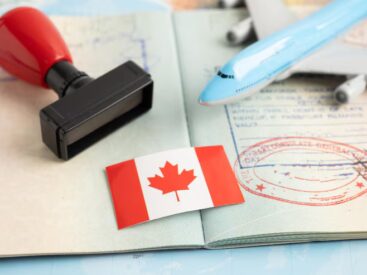British Columbia (BC) is taking significant strides to enhance the quality of postsecondary education with the introduction of Phase 2 of its International Education Framework. Announced on July 15, 2024, this new phase builds on the earlier reforms and aims to address several critical areas to ensure that the province remains a top destination for international students. Let’s dive into the details of these new measures and what they mean for students, institutions, and the education landscape in BC. BC Strategy
Understanding Phase 1: Laying the Groundwork
Before we explore Phase 2, it’s essential to understand the foundation laid by Phase 1, which began earlier in 2024. This initial phase introduced several key reforms to improve the quality and integrity of postsecondary education in BC. Key elements of Phase 1 included:

Moratorium on New Approvals:
No new approvals for institutions wanting to enroll international students were granted until 2026. This was aimed at curbing exploitative practices and ensuring that only institutions meeting high standards could accept international students. BC Strategy
Enhanced Compliance and Enforcement:
Stricter regulations were introduced to ensure institutions adhered to higher educational standards. BC Strategy
Higher Standards for Private Degree Programs:
Private institutions were required to meet elevated standards for their degree programs.
New Language Requirements:
Private training institutions had to comply with updated language proficiency requirements.
Tuition Transparency:
Public institutions were mandated to provide clearer and more transparent information about tuition fees. BC Strategy
These measures were designed to address concerns about the quality of education and protect international students from potential exploitation. BC Strategy
BC’s Position as a Major Destination for International Students
British Columbia is a significant hub for international students, reflecting the need for stringent educational standards. According to the Canadian Bureau for International Education (CBIE), in 2023, BC hosted over 217,600 international postsecondary students from more than 150 countries. This included around 111,900 students in public institutions and 105,700 in private institutions. With such a substantial number of international students, ensuring that BC remains a desirable and high-quality destination is crucial. BC Strategy
Phase 2: Key Changes and New Measures
Phase 2 of the International Education Framework introduces several new requirements and updates to further improve the educational environment in BC. Here’s a detailed look at the significant changes:
In-Person Instruction Requirement:
50% In-Person Requirement:
Institutions must now deliver at least 50% of their programs in person to international students. This change aims to enhance the learning experience by ensuring that students benefit from direct interaction with instructors and peers, which is often more effective than online learning alone.
Support Staff for International Students:
Dedicated Support:
This includes providing help with academic matters, personal issues, and navigating life in a new country. Having support staff ensures that international students receive the assistance they need to thrive in their studies and adapt to their new environment.
Compliance with IRCC Reporting:
Regulatory Compliance:
Institutions must comply with reporting requirements set by Immigration, Refugees and Citizenship Canada (IRCC). This ensures that institutions adhere to immigration regulations and provide accurate information regarding student status and enrollment.
New Code of Practice for EQA-Designated Institutions:
Marketing and Promotion:
The new Code of Practice requires institutions to provide clear and accurate marketing and promotional information. This transparency helps prospective students make informed decisions and avoids misleading claims.
Accountability for Education Agents:
Institutions must ensure that education agents they work with are accountable and adhere to ethical practices.
Tuition Transparency:
Institutions are required to maintain transparency regarding tuition fees, ensuring that students have a clear understanding of the costs involved.
Housing Assistance:
Institutions must assist students in finding suitable housing, helping to alleviate one of the significant challenges faced by international students.
Academic and Health Supports:
Institutions are required to provide adequate academic support and measures to ensure student health and safety. This includes access to counseling services, health resources, and academic advising.
Reactions from Educational Institutions
Here’s a closer look at how some institutions are reacting to these new measures:
Carolyn Russel, Vice President of Students at Vancouver Island University, expressed her enthusiasm for Phase 2. She believes that the new measures will ensure a consistent and high-quality experience for international students across the BC postsecondary sector. According to Russel, these changes will help set BC apart as a top choice for international students by demonstrating a commitment to providing a supportive and transparent educational environment.
Vinnie Nobre, Vice President of Canadian Operations at ILSC Education Group, which includes ILSC Language Schools and Greystone College, views the framework as an exciting opportunity. He fully supports the government’s commitment to maintaining high standards and believes that these measures will enhance the educational experience for all students in the province.
Angela Johnston, VP Academic at ILAC Education Group, which operates institutions like the International Language Academy of Canada, ILAC International College, and Tamwood Languages and Careers, is also supportive of the new measures. Johnston believes that the updated framework will improve quality assurance across the international education sector and ensure that students receive the quality education they expect from their Canadian studies.
Implications for Public and Private Institutions
The new measures in Phase 2 come with specific changes for both public and private institutions:
Public Institutions:
Enrollment Cap:
Public institutions will have a cap on international student enrollments, set at 30% of the total student body. This aims to balance the number of international students with the institution’s capacity and resources.
Tuition Fee Transparency:
Public institutions will face stricter obligations regarding the transparency of tuition fees, ensuring that all costs are clearly communicated.
International Education Strategic Plan:
Public institutions must develop and implement a strategic plan for international education, outlining their approach to supporting international students and enhancing their educational offerings.

Private Degree-Granting Institutions:
Increased Fees:
Private institutions will face higher annual, application, and review fees.
Labor Market Alignment:
Degree programs offered by private institutions must align with labor market needs to ensure that graduates are well-prepared for employment.
Enrollment Management:
Private institutions must manage their enrollment in a way that is appropriate for their infrastructure and available student resources.
Private Training Institutions:
Increased Fees and Standards:
Private training institutions, including language schools, will face higher government fees and stricter program content standards. This ensures that training programs meet high quality standards.
Enhanced Student Protections:
New protections for students include more generous refund policies, reduction of maximum contract terms, and a ban on high-pressure sales tactics. These measures aim to protect students from unfair practices and ensure they have a positive educational experience.
Moving Forward: Recommendations and Ideas
As BC continues to implement these measures, several recommendations and ideas have emerged for further supporting international education:
Enhanced Quality Assurance:
Angela Johnston emphasizes the importance of increased quality assurance activities and regular site visits to ensure that institutions operate according to high standards. Ongoing engagement and consultation are critical for maintaining the integrity of the international student program.
Improved Collaboration:
Vinnie Nobre advocates for increased collaboration between public and private institutions. By sharing resources and best practices, institutions can work together to improve the overall quality of education.
Streamlined Visa and Immigration Processes:
Simplifying visa and immigration processes can make studying in BC easier for international students. Streamlining these procedures will reduce bureaucratic obstacles and enhance the attractiveness of BC as a study destination.
Regular Feedback Mechanisms:
Establishing regular feedback mechanisms from international students and institutions can provide valuable insights into the effectiveness of the new measures and highlight areas for improvement.
Support for Professional Development:
Supporting the professional development of educators and staff is essential for maintaining high educational standards and ensuring that staff are equipped to meet the needs of international students.
Clear Communication:
Carolyn Russel highlights the need for clear and transparent communication with prospective international students. Providing detailed information about the Education Quality Assurance (EQA) and the measures in place will help students understand the value and safety of studying in BC.

Conclusion: British Columbia’s introduction of Phase 2 of the International Education Framework marks a significant advancement in the province’s efforts to enhance the quality and integrity of postsecondary education. By implementing these new measures, BC aims to create a more supportive, transparent, and high-quality educational environment for both domestic and international students.
The responses from educational institutions indicate broad support for these initiatives, with many viewing them as a means to elevate BC’s status as a premier destination for international students. As the province moves forward with these measures, continued collaboration, feedback, and improvements will be crucial to their success and sustainability.
Disclaimer:
The information provided in this blog post is based on the announcements and details regarding Phase 2 of the International Education Framework in British Columbia as of July 15, 2024. While every effort has been made to ensure accuracy, policies and regulations may change. Readers should verify details with official sources and consult relevant institutions or government bodies for the most current information. This blog post is for informational purposes only and does not constitute professional advice or an endorsement of any specific institution or policy.
Source: thepienews.com
Get Free Expert Advice: Are you ready to embark on your next adventure? Whether you’re seeking a work permit, tourist visa, or study opportunities in Canada or other countries, we’re here to help! Contact us today to learn how our expert services can simplify your journey and turn your dreams into reality. Reach out now and let’s start planning your future together!
- Discover Canada’s Updated CRS Score System: Easier Access to Permanent Residency
- Canada’s New Immigration Policy: Ending ‘Flagpoling’ for Post-Graduation Work Permits
- Exploring Canada’s Healthcare System: Reliance on Temporary Workers and Economic Immigration
Also read:
- Latest IRCC Processing Times for March 2025 – Major Updates Revealed
- New Canada Immigration Fees Effective December 1, 2024
- Canada’s 2024 Wildfire Relief Measures for Foreign Nationals
- Your Canadian Immigration Journey: 10 Strategies to Raise Your CRS Score
- Work in Canada: Secure Your Work Permit with MS Overseas Consultant



